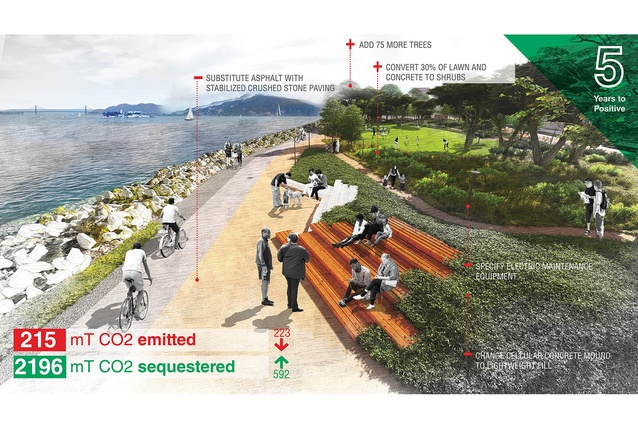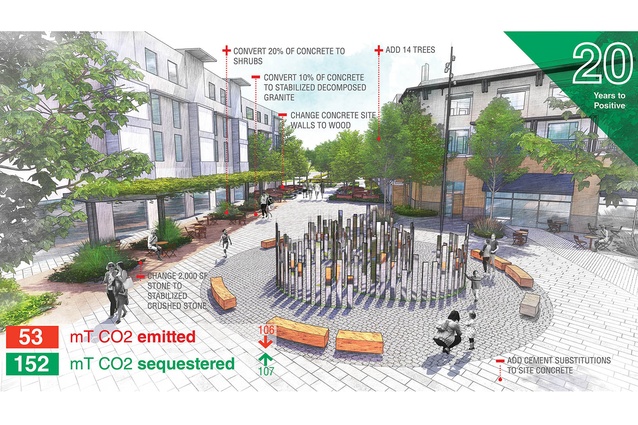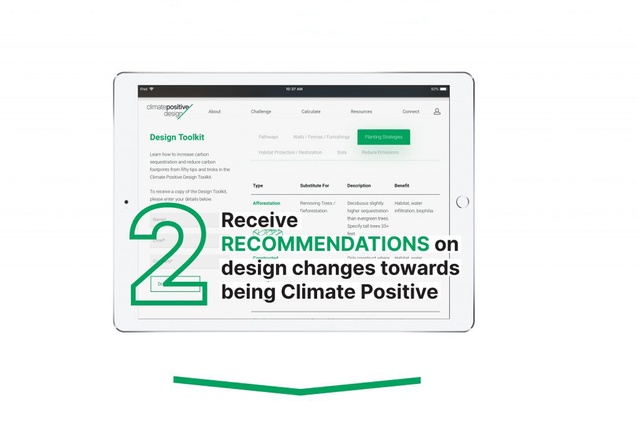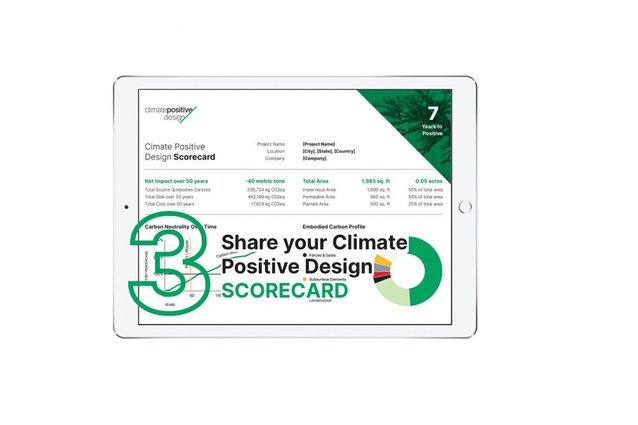Climate Positive Design Challenge
On the back of global climate change protests, U.S firm CMG Landscape Architecture has launched the Climate Positive Design Challenge, which enables professionals around the world to take climate action.
The Challenge establishes targets for reducing emissions and sequestering carbon in the built environment, with a goal of going ‘beyond neutral’ – sequestering more carbon than emitted and providing a positive contribution towards reversing global warming.
“Landscape architecture is the only design profession that can not only reduce emissions but also increase carbon sequestration,” says Pamela Conrad, Principal of CMG Landscape Architecture and founder of the initiative. “To date, we have not had the tools, guidance, or resources to make this contribution. With these now in place, it is time that we rise to the climate crisis. It is not only an opportunity to reimagine how we design our world from every aspect, but a responsibility.”
Conrad is a 2018-2019 Landscape Architecture Foundation (LAF) Fellow for Innovation and Leadership. The Climate Positive Design initiative is the product of years of research and collaboration with Atelier Ten. Designers can meet the goals of the Challenge by logging projects into a web-based application called the Pathfinder. The app encourages design strategies that sequester more CO2 than they emit – becoming Climate Positive.
It provides guidance for improving the impact of site design projects on the environment.
The goal is for global landscape architecture projects to collectively sequester more carbon than emitted between now and 2030. If the targets are continuously met, the profession has the opportunity to remove one gigaton of CO2 from the atmosphere beyond project emissions by the year 2050.
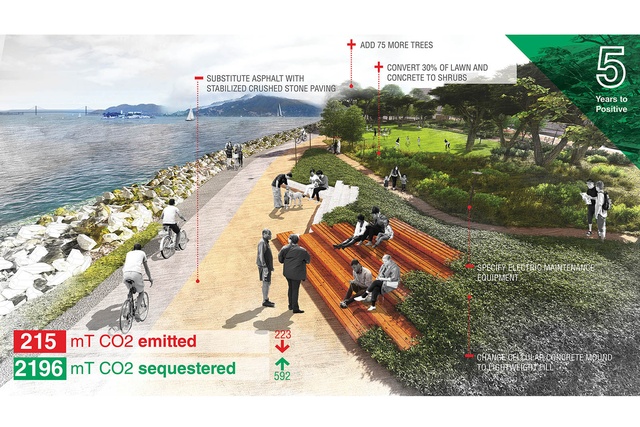
The targets establish the maximum number of years it should take a project to offset carbon emissions based on CMG project case studies. A target of five years is suggested to offset carbon footprints for greener projects like parks, gardens, campuses, and mixed-use developments. For more urban projects that require a greater amount of hardscape to accommodate programming, 20 years is the targeted offset duration. The case study analysis revealed that the targets could be met without changing the program or reducing the quality – the projects merely became greener.
Initially, all who log a project in the app will be recognized as contributors on the Climate Positive Design website. Data will be collected over time to evaluate how the Challenge goals are being met, which will be reviewed by advisory partners including the LAF, American Society of Landscape Architects (ASLA), Canadian Society of Landscape Architects (CSLA), International Federation of Landscape Architects (IFLA), and the Landscape Architecture Canada Foundation (LACF).
Users of Pathfinder are directed to input the following quantities:
- Sources. This includes approximately eighty different types of materials used in landscape projects such as paving, walls, fences etc. and their associated ‘embodied carbon’ from extraction, manufacturing, transportation, installation, use/maintenance and replacement. The data is derived from the Athena Impact Estimator.
- Sinks. Trees, plants, wetlands and certain types of meadows/lawns capture CO2 from the atmosphere and sink carbon into the soil. All data used for calculating sequestration and decomposition for trees and shrubs is obtained from the US Forest Service.
- Costs. Carbon Costs represent emissions associated with mowing/pruning performed using machinery and fertilizer use for trees and shrubs. These emissions occur regularly over the lifespan of the project and are often referred to as ‘operational carbon’.

After the user inputs quantities, they receive a Climate Positive score that indicates how many years it will take to offset the project’s carbon footprint. To lower the score, the user receives design recommendations to reduce emissions and increase sequestration, thus offsetting their project faster and providing a positive contribution to reducing global greenhouse gas concentrations sooner. Each user has a project page where data from projects is stored and can be revisited. A scorecard is provided with project details including total carbon emitted, stored and years to offset, with a purpose of further understanding and sharing with others.
“Many of the challenges surrounding the climate crisis are around communication and education. Everyone wants to help, but they don’t quite know what to do,” Conrad says. “It is my goal to make climate smart decisions easy to do and easy to communicate. Then maybe, just maybe, we’ll be able to make a difference.”
The Climate Positive Design initiative is founded with a goal of empowering landscape architects, property owners, municipalities, and related disciplines to take climate action. By providing tools, guidance, and resources the initiative seeks to enable positive changes that can be made now and do not require new regulations or policies – merely activism through education. Beyond the Pathfinder, the website provides additional educational resources including a Design Toolkit and Case Studies that assist with making Climate Positive Design decisions.
“These impacts will only be possible if we all work together,” Conrad says. “That is why over the past couple of years I have been bringing everyone possible into this initiative – from organizations, to schools, to firms. We need to drop our competitive tendencies, utilise the strengths of different groups, and work together for this one cause – for the challenge of our lifetime.”
Find out more at climatepositivedesign.com.
This article was first published on the Landscape Architecture Aotearoa website, which is published by the New Zealand Institute of Landscape Architects (NZILA).


